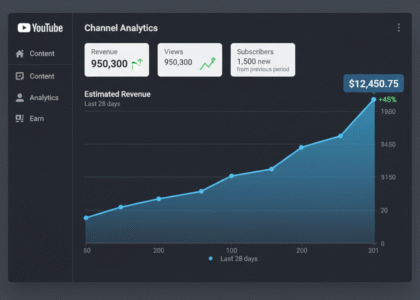In today’s fast-paced world, creating financial goals is more crucial than ever. Whether you’re a young adult embarking on your career, a beginner investor, or a middle-income earner seeking financial stability, setting and achieving these goals can pave the way to a secure and prosperous future.
Understanding Financial Goals
Financial goals are specific objectives you set to manage your finances effectively. They can range from short-term aims like building an emergency fund to long-term aspirations such as purchasing a home or retiring comfortably. Defining these goals provides direction and motivation, ensuring that your financial decisions align with your desired outcomes.
The Importance of Setting Financial Goals
Setting financial goals is akin to creating a roadmap for your financial journey. Without clear objectives, it’s easy to lose direction and make impulsive decisions that may hinder your financial well-being. Goals help you prioritize your spending, encourage saving, and provide a sense of accomplishment as you achieve each milestone.
Steps to Creating Effective Financial Goals

1. Identify and Prioritize Your Goals
Begin by listing all your financial aspirations. These could include paying off debt, saving for a vacation, or investing for retirement. Once listed, prioritize them based on urgency and importance. This prioritization ensures that you focus on goals that have the most significant impact on your financial health.
2. Categorize Your Goals
Financial goals can be segmented into three categories:
- Short-term goals: Achievable within a year, such as creating a budget or building an emergency fund.
- Medium-term goals: Attainable within one to five years, like purchasing a car or paying off credit card debt.
- Long-term goals: Goals that take more than five years to achieve, such as buying a home or retirement planning.
Categorizing your goals helps in allocating resources and setting realistic timelines.
3. Make Your Goals SMART
To increase the likelihood of achieving your financial goals, ensure they are SMART:
- Specific: Clearly define what you want to achieve.
- Measurable: Quantify your goal to track progress.
- Achievable: Set realistic goals considering your current financial situation.
- Relevant: Ensure the goal aligns with your broader financial objectives.
- Time-bound: Set a deadline to create a sense of urgency.
For example, instead of saying, “I want to save money,” a SMART goal would be, “I aim to save $5,000 for an emergency fund within the next 12 months.”
4. Develop a Financial Plan
A comprehensive financial plan acts as a roadmap to achieve your goals. It involves assessing your current financial situation, creating a budget, and determining the steps needed to reach each goal. Regularly reviewing and adjusting your plan ensures you stay on track and adapt to any changes in your financial landscape.
5. Automate Your Savings and Investments
Automating your finances minimizes the temptation to spend and ensures consistent progress toward your goals. Set up automatic transfers to savings or investment accounts, aligning with your payday to “pay yourself first.” This strategy enforces discipline and simplifies the saving process.
6. Monitor and Adjust Your Goals
Regularly reviewing your financial goals is essential to account for life changes, economic shifts, or personal milestones. Adjusting your goals ensures they remain relevant and achievable. For instance, a promotion or salary increase might allow you to expedite certain goals, while unexpected expenses may require a reassessment of your timelines.
Common Financial Goals and How to Achieve Them

Building an Emergency Fund
An emergency fund acts as a financial safety net for unforeseen expenses. Aim to save three to six months’ worth of living expenses in a readily accessible account. Start by setting aside a small portion of your income regularly until you reach your desired amount.
Paying Off Debt
High-interest debt can significantly impede financial progress. Prioritize paying off debts with the highest interest rates first, known as the avalanche method, or start with smaller debts to build momentum, known as the snowball method. Consistent payments and avoiding additional debt are key to becoming debt-free.
Saving for Retirement
It’s never too early to start saving for retirement. Utilize employer-sponsored retirement plans, such as a 401(k), especially if your employer offers matching contributions. Additionally, consider individual retirement accounts (IRAs) to diversify your retirement savings.
Investing for Wealth Growth
Investing is a powerful tool for building wealth over time. Educate yourself on various investment options, such as stocks, bonds, or mutual funds, and choose those that align with your risk tolerance and financial goals. Regular contributions and a long-term perspective are vital for investment success.
FAQs
Q: How do I determine which financial goal to prioritize?
A: Assess the urgency, impact, and feasibility of each goal. Immediate needs like an emergency fund or high-interest debt repayment often take precedence over long-term goals.
Q: How often should I review my financial goals?
A: It’s advisable to review your financial goals at least annually or whenever significant life events occur, such as a job change, marriage, or the birth of a child.
Q: What if I can’t afford to save or invest right now?
A: Start small. Even modest contributions can grow over time. Focus on creating a budget to identify areas where you can cut expenses and redirect those funds toward savings or investments.
Q: How can I stay motivated to achieve long-term financial goals?
A: Break long-term goals into
Conclusion
Creating financial goals is the foundation of a secure and prosperous future. By identifying, prioritizing, and structuring your goals using the SMART approach, you can take control of your finances and work toward long-term success. Whether you’re building an emergency fund, paying off debt, or planning for retirement, consistency and strategic planning are key. Start today, track your progress, and adjust your goals as needed to stay on course.






